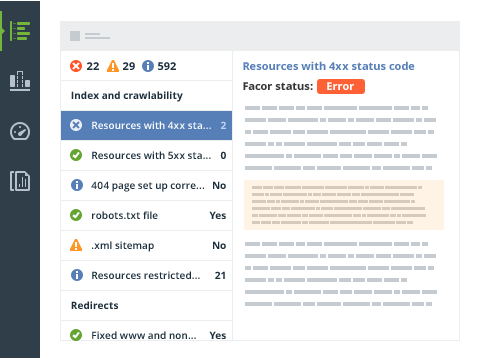
That’s definitely not a good thing: you need to have your website settings and redirect rules set up to ensure that all four of versions resolve to a single version. That’s because from a Google crawler’s perspective, these are all different URLs: Many website owners don’t realize that it’s possible for search engines to index four different versions of your site. Step 2: Make sure Google is only indexing one version of your website

Our first step is to understand how your website is performing right now. Step 1: Get some baseline data with Google Analytics Learn more about the products and services we recommend here. And finally, steps 14–15 will get you set up to monitor your website over time and make sure you are alerted automatically of any significant changes that need your attention.ĭisclosure: some of the links below are affiliate links, meaning that at no cost to you, we will earn a commission if you click through and make a purchase.Step 13 touches on what new content you might want to create on your website.


Steps 10–12 are about improving your existing website content and on-page SEO.Steps 2–9 are focused on technical performance, clean-up, and optimization of the website as a whole.Step 1 is focused on some basic tool setup and getting some baseline data about traffic on your website and your current visibility in organic Google search results.This checklist is organized to help you be efficient, so as much as you can, try and follow the steps in order! Step 15: Set up keyword position tracking and alerts.Step 14: Set up recurring website health monitoring and alerts.Step 13: Peek at your competitors’ websites and identify content gaps.Step 12: Organize your website navigation.Step 11: Make sure your content gives users what they are looking for.Step 10: Improve on-page SEO for your most important content.Step 9: Check your website against user accessibility guidelines.Step 8: Analyze backlinks (and disavow toxic links if necessary).Step 7: Fix broken links and stop 404 errors.Step 6: Fix indexing problems using Google Search Console.Step 5: Remove low-quality and unnecessary pages from Google’s index.Step 3: Check that your website is mobile friendly.Step 2: Make sure Google is only indexing one version of your website.Step 1: Get some baseline data with Google Analytics.
Website auditor free professional#
Take the time to consider what’s important to your website (and to your business), and if you decide to work with an SEO consultant or order a professional website audit service, make sure they ask you questions about your business objectives and current pain points before they get started.

And every website (and every business) is different.
Website auditor free software#
The checklist and template presented here covers all of these topics.Ī word of warning before we get started: there are lots of tools and software platforms out there that offer a “website audit” or “website check” or “website seo audit”, and some of them are even free!Ī templatized, one-size-fits-all website audit can be helpful as a starting point, but a real website audit needs to also take into account the specific needs, functionality and structure of the website. Website audits can cover lots of areas, including your website’s technical performance, search engine optimization (SEO), user experience (UX), website content, design, and accessibility. In this guide we’re going to share our complete website audit checklist that you can use to boost your Google search rankings and get more traffic on your website.


 0 kommentar(er)
0 kommentar(er)
